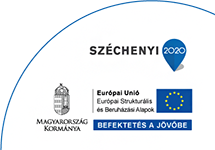1. New web design, better conversion? Yes!
As the case study of Walmart by clx.com shows, a clear, user-friendly interface could improve the conversion rates by 20%, thanks to some simple and easy changes.
Walmart has recognized that most of its visitors are using tablets and smartphones, so they have decided to change the website. By removing the ‘More details’ button on the product pages where the product was not on stock, conversion rates improved. Unbelievable as it sounds, but often less is more.
As it seems, to convert a potential customer to a returning one depends on such small things, so it is worth keeping it in mind.
2. Can videos optimize conversion rates? Not always
BrookdaleLiving.com offers seniors high-quality, safe housing and care in nearly 700 locations. They started with a completely schematic page, so they ended up deciding to redesign it. Fathom, who was in charge of the optimization, made two variations and then came up with unexpected results during testing.
The image-based design won over the version with video content. This was due to several factors, one was that some users had a slower internet connection, so the video did not load properly. In these one-and-a-half-minute short films, seniors talked about their positive experiences in Brookdale. As it turned out, these videos were taken by many as unnecessary advertising, a marketing push - that was the other important factor. In addition, the older target audience was averse to audiovisual content, which led them to leave the site quickly.
Brookdale has learned the lesson: visitors, more specifically, their target audience, want to be informed quickly and in a simple way, without any spam. This also shows that there is no proven recipe, when optimizing the conversion, we need to consider our target audience, and what do we offer, and how.
3. A multi-step process instead of a long list
Venture Harbour’s example shows that great discoveries sometimes happen by accident. In short, Venture Harbour helps companies to become more successful by enlisting the issues and finding solutions for them. In their experience, the conversion rate can be increased if users complete the entire process in several steps. This means that, for example, during the ordering process, we should not shock the customer with a long-form, but ask for the details in pieces. This not only helps to optimize the user experience but also improves the conversion rate- in this case, over one week, with a 300%.
As with everything else, scaling is essential. Asking more than one question at the same time is okay, the process should not be fragmented too much, as this can have the opposite effect. As mentioned above, the first step is to determine how would you crawl your website. A good start point could be to survey customer satisfaction, as you may encounter a number of problems that would never occur to you. In this case, too, a multi-step method can be useful.
In the meantime, it is best to inform the customer how many steps the whole process consists of and how much is left. This way there is a much better chance of completing.
4. Social media- necessary or not?
As mentioned in the clx.com article, there are two examples that explain why we should not connect our social media presence with online purchases. Of course, a lot of visitors could arrive from Facebook as we have a lot of ads presented there, but at the end of the purchase, this won’t matter.
The Norwegian BliVakker offers cosmetics and has been developing quickly thanks to their good prices. They thought the shopping process would be made easier by allowing customers to sign in with their Facebook account - they were disappointed. After removing this option, the conversion rate increased by 3% and they generated $10,000 more revenue per week.
Another example is the Finnish Taloon e-commerce web store, which offers plumbing, electronic, and gardening devices. They wanted to optimize the purchases so they started to do some tests. As it turns out, there was a problem with the product page: there was a button that would have allowed customers to share the item on their social site. Beyond that, no one did, they even became distrustful of its quality. After getting rid of this excess item, their conversion increased by 11.9%.
From the above, it also turns out that when you want to increase your conversion rate, you might want to start by reviewing the most basic things. If the customer has decided that the purchase will be made on our store, using our service, we should try to help them to get to the end of the process as quickly as possible - even in several steps, but without any unnecessaries!



